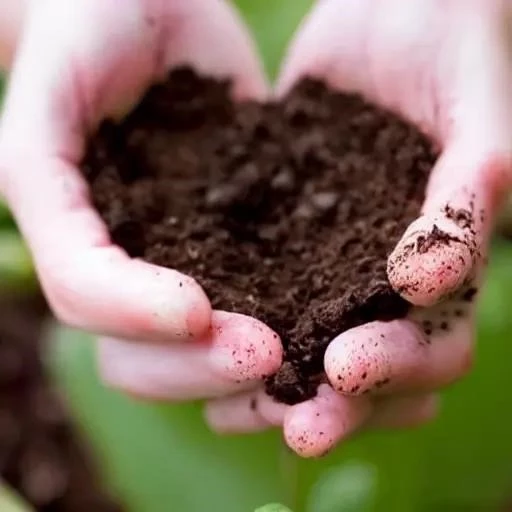
In an increasingly digital age, the tactile joy of nurturing life from its most fundamental origin offers a profound and deeply satisfying counterpoint․ Gardening from seeds, far from being a mere hobby, represents a potent act of hope, sustainability, and unparalleled personal connection with the natural world․ Imagine savoring a sun-ripened tomato, its flavor a testament to your diligent care from a tiny, unassuming speck․ This isn’t just about cultivating plants; it’s about cultivating patience, resilience, and a deeper understanding of ecological cycles, ultimately enriching both our personal landscapes and the planet․
Embracing the journey from seed to harvest unlocks an extraordinary spectrum of possibilities, allowing gardeners, from the novice to the seasoned expert, to explore an unparalleled diversity of plant varieties often unavailable as nursery starts․ This approach fosters not only economic prudence but also a remarkable sense of accomplishment, watching delicate sprouts emerge from the soil, defying all expectations․ By integrating insights from age-old horticultural wisdom with cutting-edge techniques, we stand at the precipice of a new era in home gardening, promising bountiful yields and vibrant, thriving ecosystems right outside our doors․ Indeed, the future of our gardens begins with a single, perfectly placed seed․
Essential Steps for Thriving Seed Starts
| Category | Key Tip/Detail | Why It Matters |
|---|---|---|
| Seed Selection | Choose high-quality, viable seeds suited for your climate and growing zone․ Consider heirloom or open-pollinated varieties for future seed saving․ | Ensures robust growth, higher germination rates, and plants well-adapted to local conditions․ |
| Proper Medium | Utilize a sterile, fine-textured seed-starting mix, specifically designed for delicate seedlings, avoiding heavy garden soil․ | Prevents damping-off disease, provides optimal drainage, aeration, and light nutrients for young roots․ |
| Ideal Conditions | Maintain consistent moisture (not waterlogged), adequate light (12-16 hours with grow lights often essential), and appropriate temperature for specific seed types․ | Promotes strong, stocky seedling development, preventing leggy growth and encouraging healthy root systems․ |
| Hardening Off | Gradually acclimatize seedlings to outdoor conditions (sun, wind, fluctuating temperatures) over a 7-14 day period before permanent transplanting․ | Reduces transplant shock, strengthens plant structure, and fosters greater resilience against environmental stressors․ |
For further in-depth guidance on seed starting, visit a trusted resource like Gardener’s World․
The Unseen Alchemy: From Dormancy to Dynamic Growth
The magic truly begins with seed selection, a critical first step often underestimated by nascent gardeners․ Discerning the right seeds for your climate, soil type, and sunlight exposure is paramount․ “Investing in high-quality, non-GMO, and often organic seeds from reputable suppliers dramatically increases your chances of success,” advises Dr․ Eleanor Vance, a celebrated botanist and author of ‘The Seed Whisperer․’ She emphasizes the importance of understanding a seed’s provenance, as genetic predispositions play a monumental role in a plant’s vitality․ Furthermore, opting for heirloom varieties not only preserves genetic diversity but also connects you to a rich tapestry of horticultural history, offering flavors and textures often lost in commercial cultivars․
Once selected, providing the optimal environment for germination becomes the gardener’s primary quest․ This isn’t merely about planting; it’s about engineering a miniature ecosystem․ A sterile, fine-textured seed-starting mix, distinct from general potting soil, is incredibly effective in preventing ‘damping-off,’ a fungal disease devastating to young seedlings․ Proper moisture management is another cornerstone; seeds require consistent hydration without being waterlogged, a delicate balance often achieved through bottom-watering or misting․ Moreover, light, often overlooked during germination, is crucial immediately upon emergence․ While some seeds require darkness to sprout, nearly all seedlings demand ample light—typically 12 to 16 hours daily—to prevent them from becoming leggy and weak, desperately stretching for a distant sunbeam․ Advanced gardeners frequently employ grow lights, a remarkably efficient method for ensuring robust, stocky starts, particularly in northern latitudes or during short winter days․
Nurturing the Future: Beyond Germination
As seedlings mature, their needs evolve, demanding a nuanced approach to care․ Thinning, the seemingly counterintuitive act of removing weaker seedlings, is a vital practice ensuring the strongest individuals receive adequate resources, preventing overcrowding and fostering superior development․ This difficult but necessary decision ultimately strengthens the remaining plants, allowing them to flourish unhindered․ Fertilization, too, transitions from minimal to moderate․ Once true leaves appear—the second set of leaves, distinct from the initial cotyledons—a diluted, balanced liquid fertilizer can provide the essential nutrients for vigorous growth, acting as a gentle nudge towards their full potential․ Over-fertilization, conversely, can burn delicate roots, an easily avoidable pitfall with careful application․
Perhaps the most critical, yet frequently underestimated, stage is “hardening off;” This gradual acclimatization process, typically spanning one to two weeks, meticulously prepares indoor-started seedlings for the harsh realities of the outdoor world․ Beginning with short stints in a sheltered outdoor location, incrementally increasing exposure to direct sunlight, wind, and fluctuating temperatures, mimics the natural progression of a plant’s life․ “Hardening off isn’t just a suggestion; it’s an absolute necessity,” stresses horticulturalist Mark Thompson, whose community garden initiatives have transformed urban spaces․ “Skipping this step is like sending a child to the Arctic without a coat—the shock can be fatal․” Properly hardened-off plants exhibit significantly reduced transplant shock and a vastly improved ability to withstand the rigors of garden life, seamlessly transitioning from protected nurseries to thriving outdoor plots․ This careful preparation is the bedrock upon which truly resilient gardens are built․
The Abundant Future: A Seed-Fueled Revolution
The journey from a tiny seed to a flourishing plant is more than just a biological process; it’s a powerful metaphor for growth, potential, and the boundless rewards of dedicated effort․ By embracing these gardening from seeds tips, you’re not merely cultivating vegetables or flowers; you’re cultivating a deeper connection to nature, fostering sustainability, and unlocking a profound sense of self-sufficiency․ This optimistic outlook on home gardening promises not just abundant harvests but also a richer, more vibrant lifestyle, one seed at a time․ The future, undoubtedly, is green, and it starts with your hands in the soil, nurturing the promise of tomorrow․
